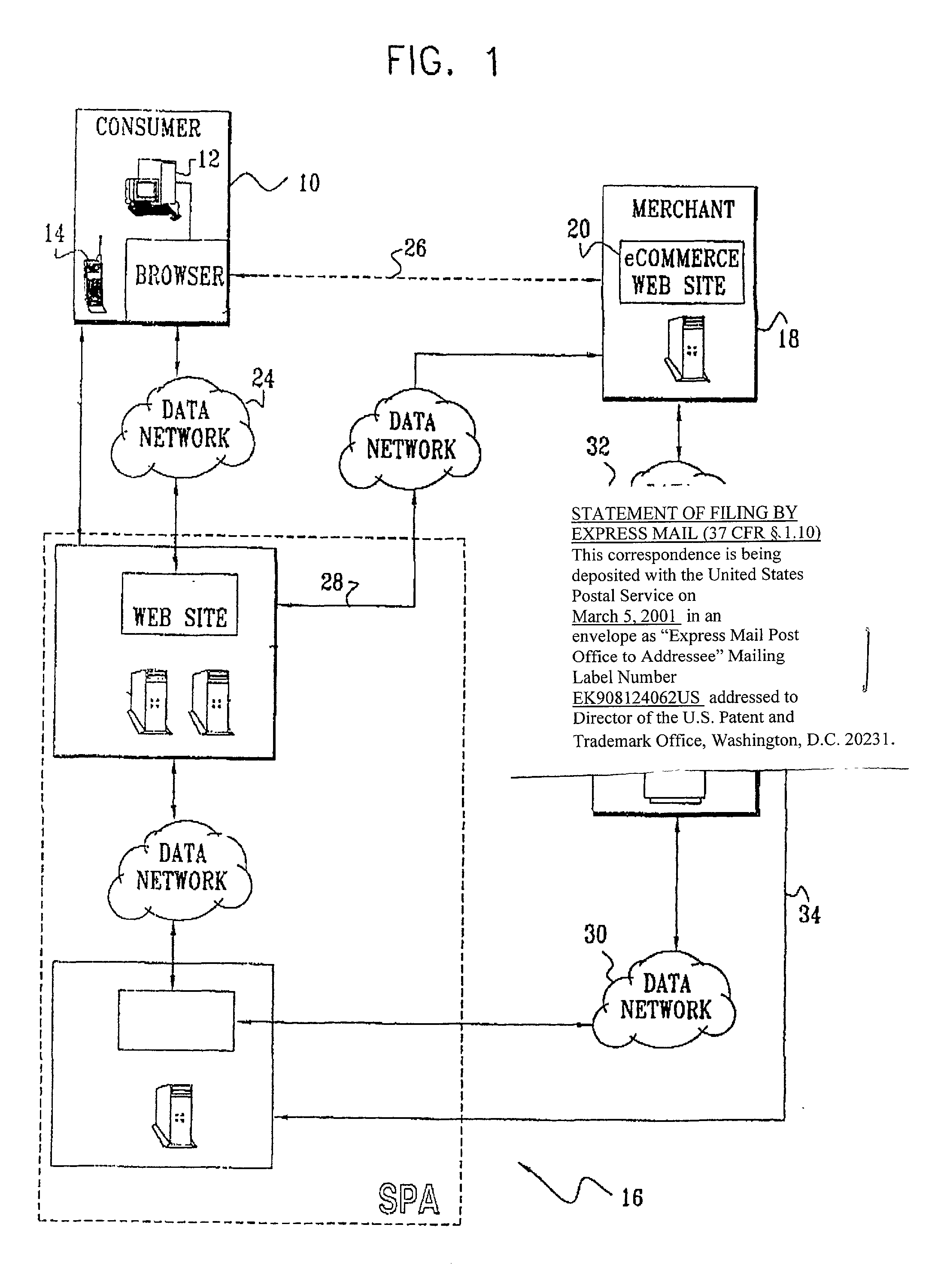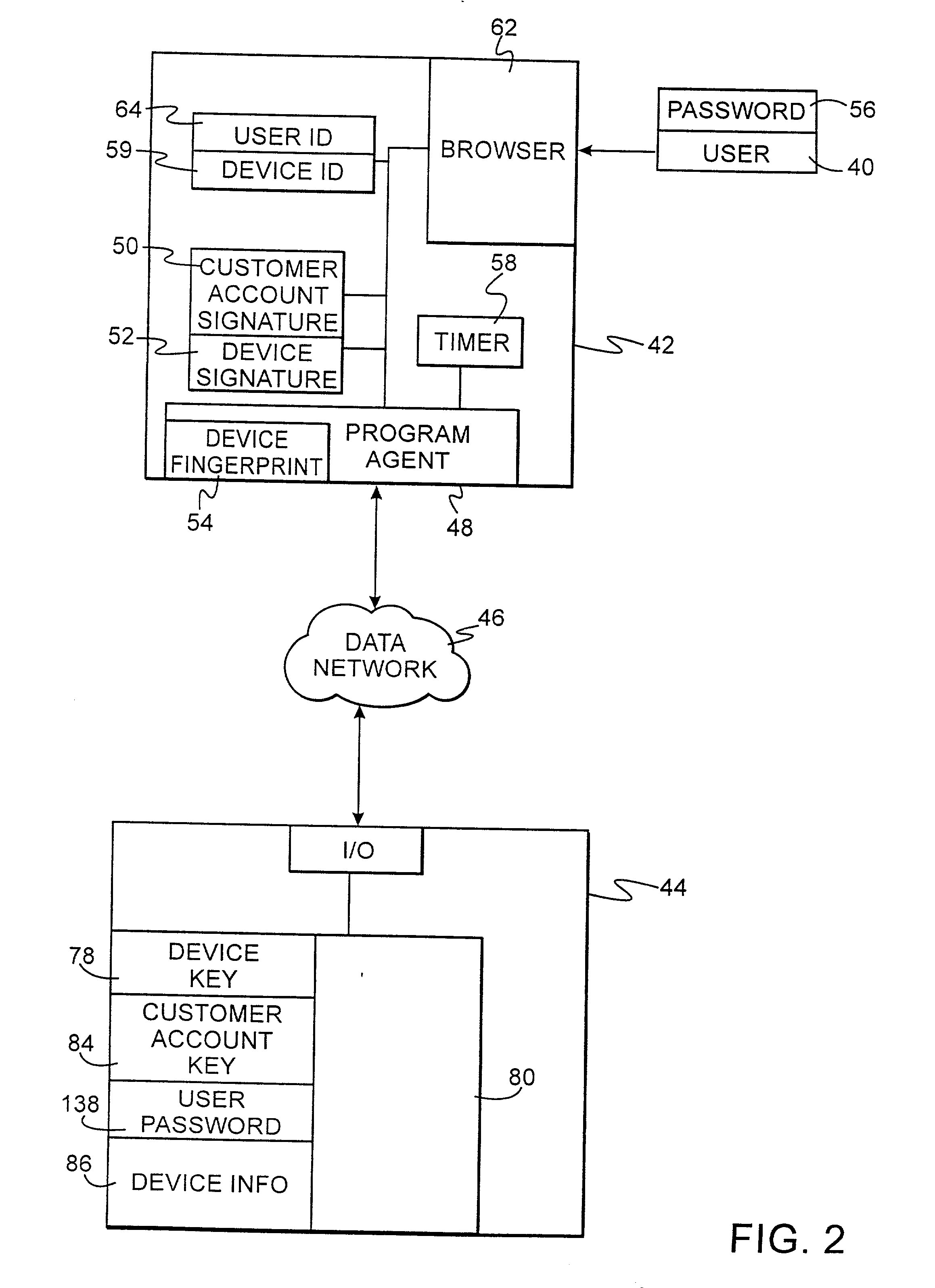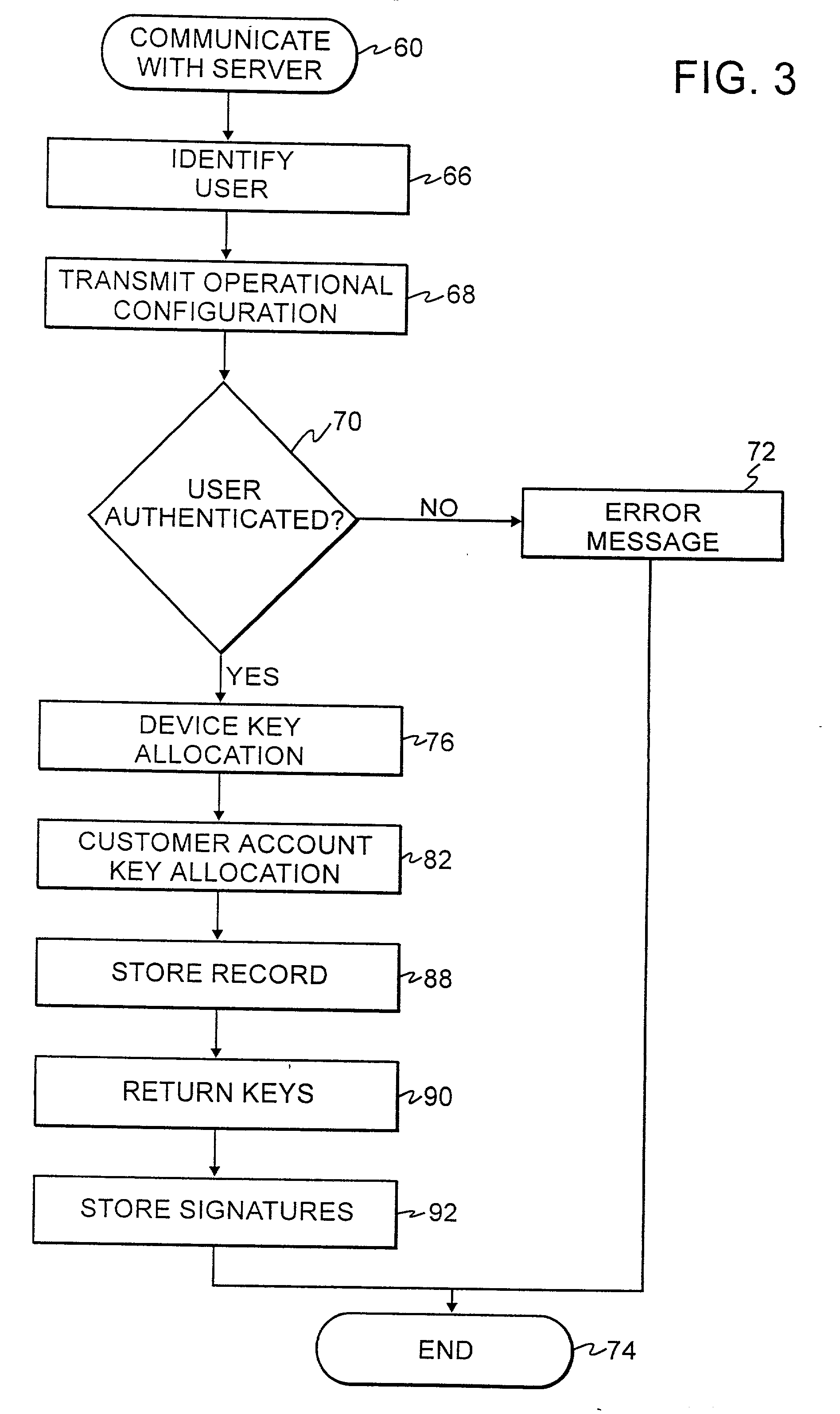Authentication technique for electronic transactions
a technology of electronic transactions and authentication techniques, applied in the field of execution of electronic transactions, can solve problems such as inconvenient use, ineffective for a limited time, and inability to be constan
- Summary
- Abstract
- Description
- Claims
- Application Information
AI Technical Summary
Problems solved by technology
Method used
Image
Examples
Embodiment Construction
[0105] Listings 1-4 illustrate actual message traffic between a customer device and a server. Table 1 explains the terms used in these listings.
1TABLE 1 Name Type Remarks MachineKey Integer Number of current and mutated NewMachineKey authentication keys, which are as- signed to the machine running the Agent. CustomerKey Integer Number of current and mutated NewCustomer- authentication keys, which are as-Key signed to the customer using the machine running the Agent. MachineId Integer A unique sequence number assigned to the Agent running on this machine by the Server. CustomerId Integer A unique sequence number assigned to the customer. The same sequence number is used by all agents serv- ing the customer. Action String The action requested by the Client using this message. Machine- Integer Device configuration parameter finger-Properties print
[0106] The data transmitted in a mutation request is shown in Listings 1 and 2. Header information has been omitted for clarity.
2 Listing 1 ;...
PUM
 Login to View More
Login to View More Abstract
Description
Claims
Application Information
 Login to View More
Login to View More - R&D
- Intellectual Property
- Life Sciences
- Materials
- Tech Scout
- Unparalleled Data Quality
- Higher Quality Content
- 60% Fewer Hallucinations
Browse by: Latest US Patents, China's latest patents, Technical Efficacy Thesaurus, Application Domain, Technology Topic, Popular Technical Reports.
© 2025 PatSnap. All rights reserved.Legal|Privacy policy|Modern Slavery Act Transparency Statement|Sitemap|About US| Contact US: help@patsnap.com



